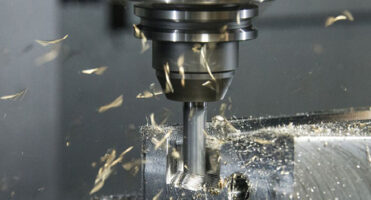CNC VS. MANUAL MACHINING: THE AUTOMATION ADVANTAGE
Manufacturing processes have evolved significantly over the years, with the introduction of Computer Numerical Control (CNC) machines revolutionizing the way products are fabricated. Traditional manual machining methods, while still valuable in specific scenarios, are increasingly being replaced by CNC machining due to the automation advantage it offers. This article explores the differences between CNC and manual machining, highlighting the various benefits of CNC technology.
1. Precision and Accuracy
CNC machining offers unparalleled precision and accuracy. These machines are capable of executing complex cuts and shapes with incredible consistency. Manual machining, on the other hand, relies on the skill and experience of the operator, making it more susceptible to human error. CNC machines can reproduce the same part with incredible accuracy, which is crucial in industries such as aerospace and medical manufacturing.
2. Efficiency and Speed
CNC machining outpaces manual methods when it comes to speed and efficiency. Once a CNC program is set up, it can run continuously, 24/7 if needed. Manual machining involves frequent tool changes, setup adjustments, and operator breaks, which can significantly slow down the production process. CNC machines operate without fatigue, delivering consistent performance throughout.
3. Complex Geometry
CNC machining excels in creating parts with intricate geometries. It can fabricate components with 3D contours, undercuts, and fine details that are nearly impossible to achieve manually. This capability opens up new design possibilities and enhances product functionality, especially in industries like automotive and mold-making.
4. Repetition and Consistency
CNC machining is ideal for projects requiring multiple identical parts. Once a program is perfected, it can be run repeatedly, ensuring that every piece is exactly the same as the last. Manual machining, while skilled operators can produce consistent results, may still have variations due to human factors and wear on tools.
5. Reduced Labor Costs
Automated CNC machining reduces the need for skilled machinists. This can lead to significant cost savings in terms of labor. Additionally, CNC machines can be operated by less experienced personnel, as the programming and setup are the most critical aspects of the process.
6. Improved Safety
CNC machines enhance workplace safety. Manual machining operations can expose workers to various risks, especially when dealing with heavy materials and sharp tools. CNC machines, on the other hand, are operated from a safe distance, reducing the potential for accidents and injuries.
7. Flexibility and Adaptability
CNC machining allows for quick reconfiguration and adaptation to changing production needs. Modifying a program or switching to a different part design is far simpler with CNC technology. Manual machining setups can be time-consuming and less versatile in this regard.
8. Data and Documentation
CNC machining offers the advantage of recording and storing data related to the production process. This data can be invaluable for quality control, traceability, and process improvement. Manual machining lacks this level of data tracking and documentation.
9. Cost-Effectiveness in Large-Scale Production
While CNC machines can be expensive to purchase and set up initially, they become extremely cost-effective in large-scale production scenarios. The increased efficiency, reduced labor costs, and minimal material wastage make CNC machining an economically sound choice for high-volume manufacturing.
10. Environmental Benefits
CNC machining can contribute to a more sustainable production process. With its ability to minimize material waste and energy consumption, CNC technology aligns with eco-friendly manufacturing practices.
In conclusion, while manual machining still has its place in certain applications and small-scale productions, CNC machining offers a clear automation advantage. Its precision, efficiency, safety, and ability to handle complex geometries make it an indispensable tool in modern manufacturing. As technology continues to advance, the divide between CNC and manual machining will likely grow, with CNC becoming the preferred choice for industries seeking a competitive edge in production.


